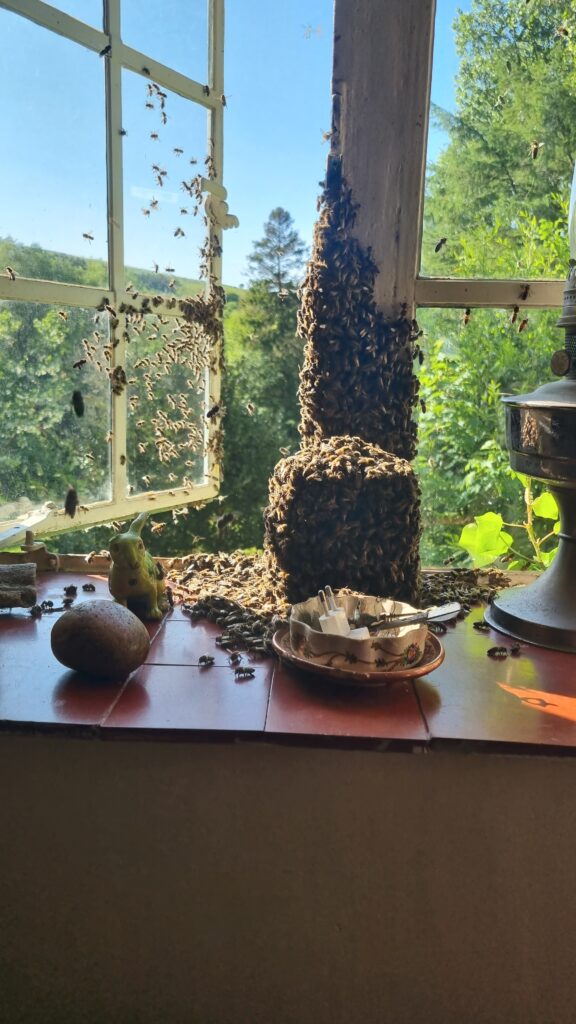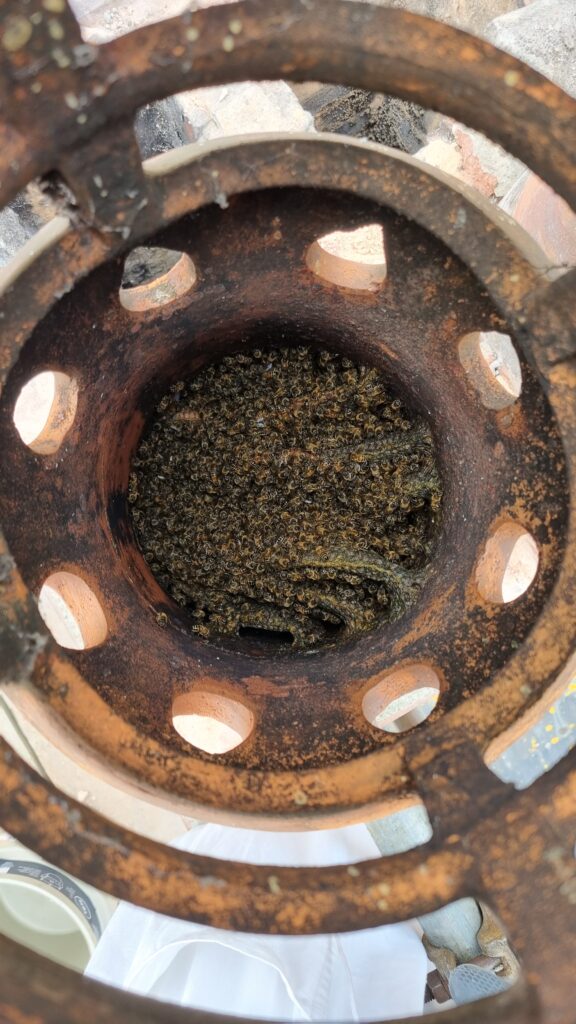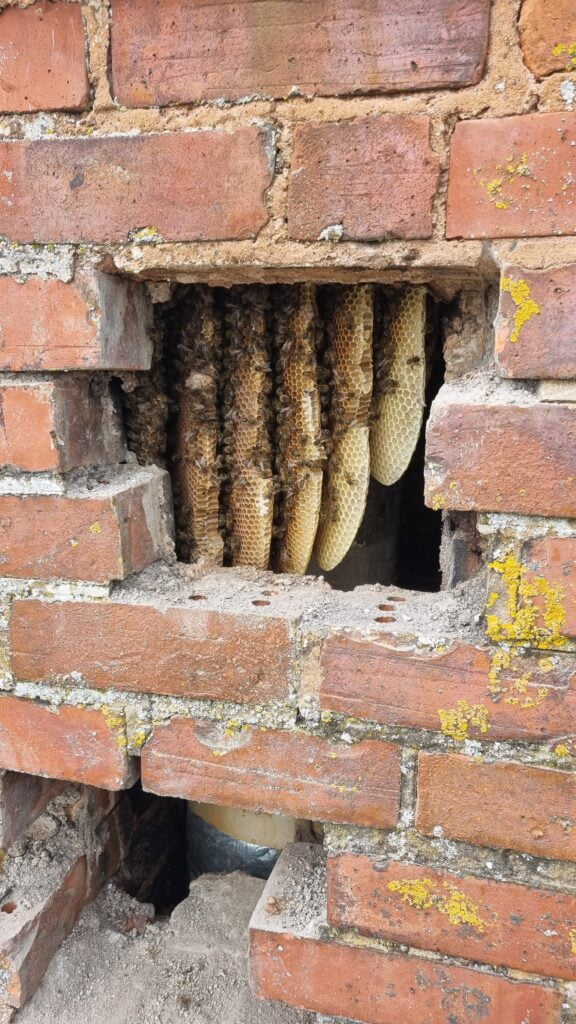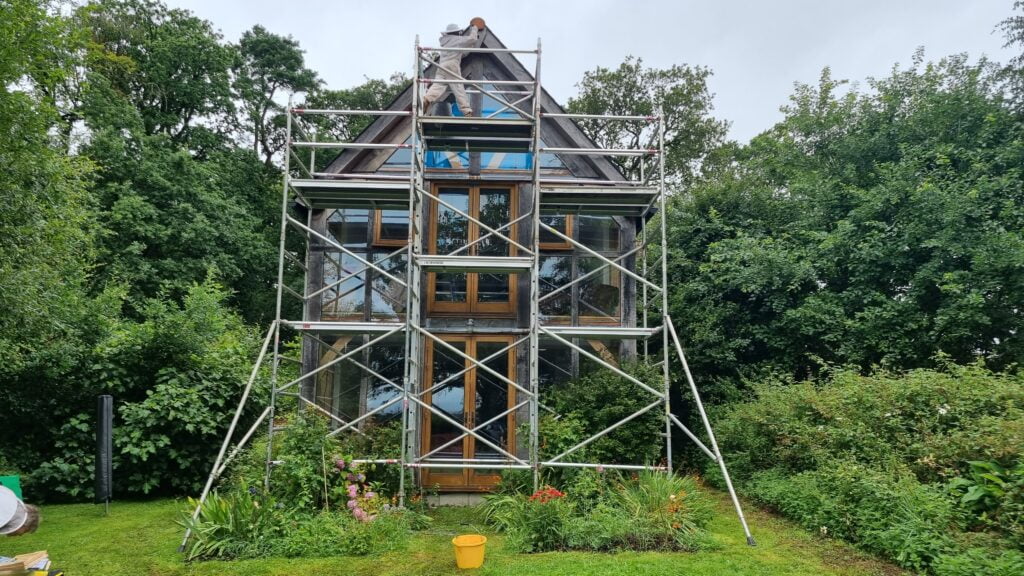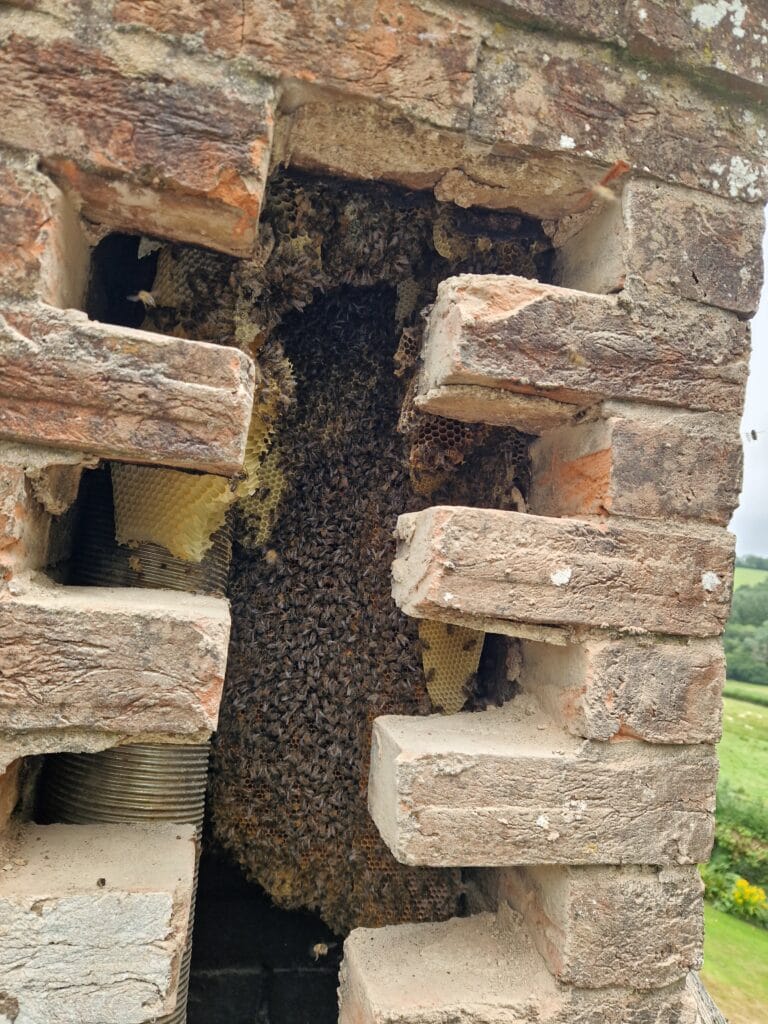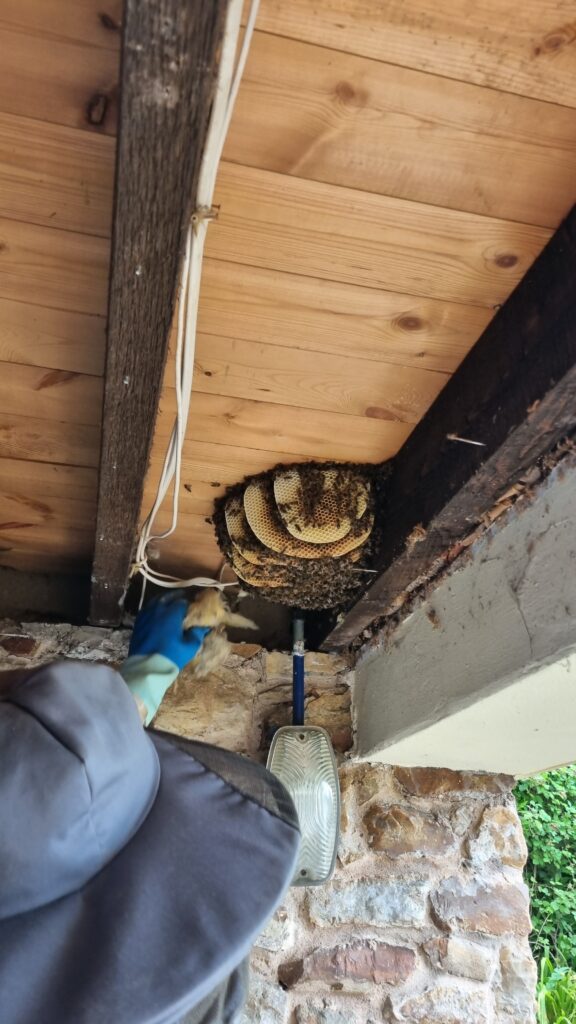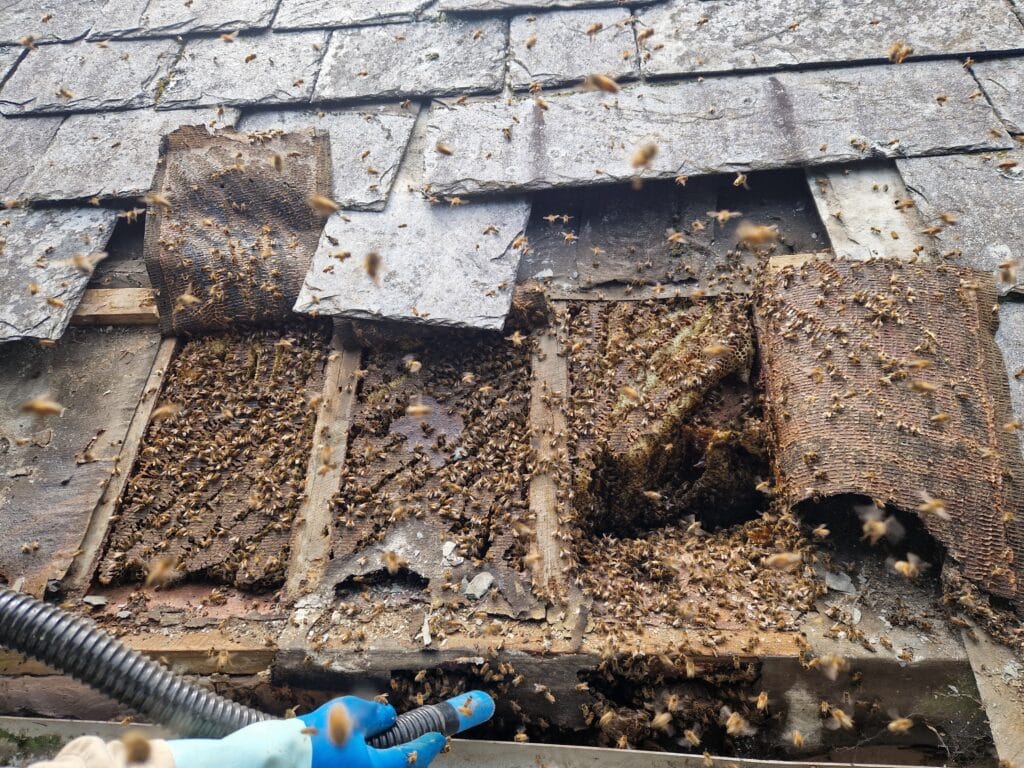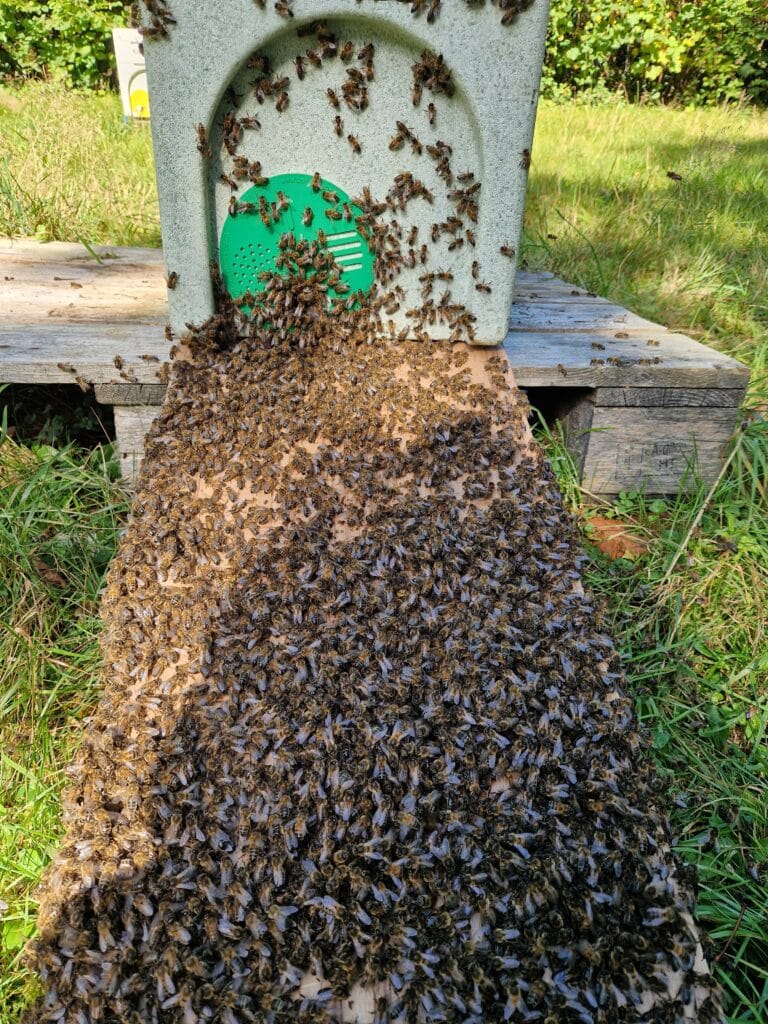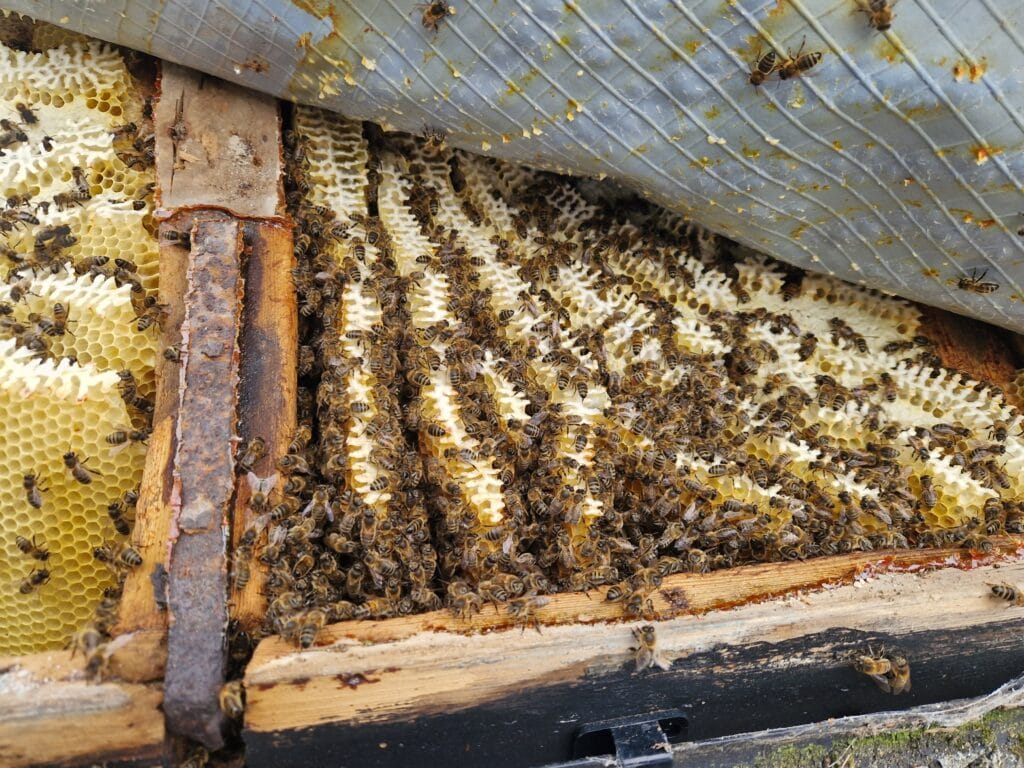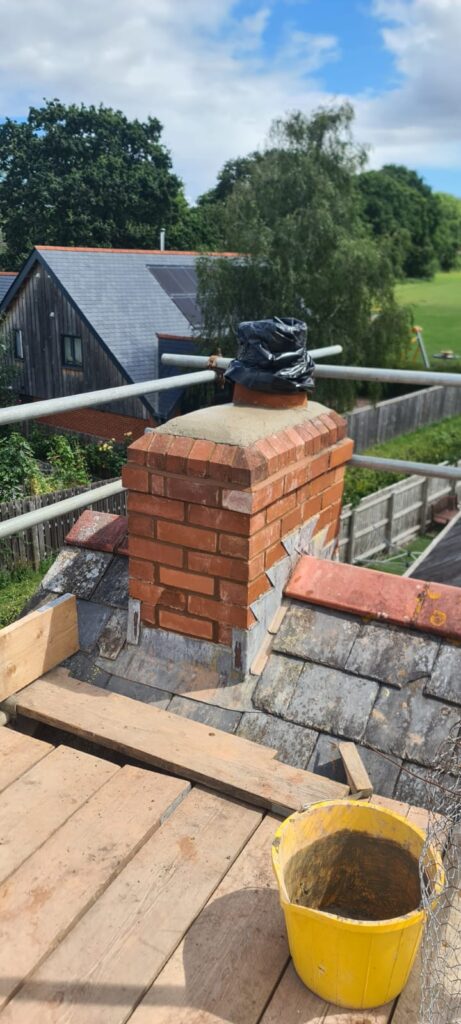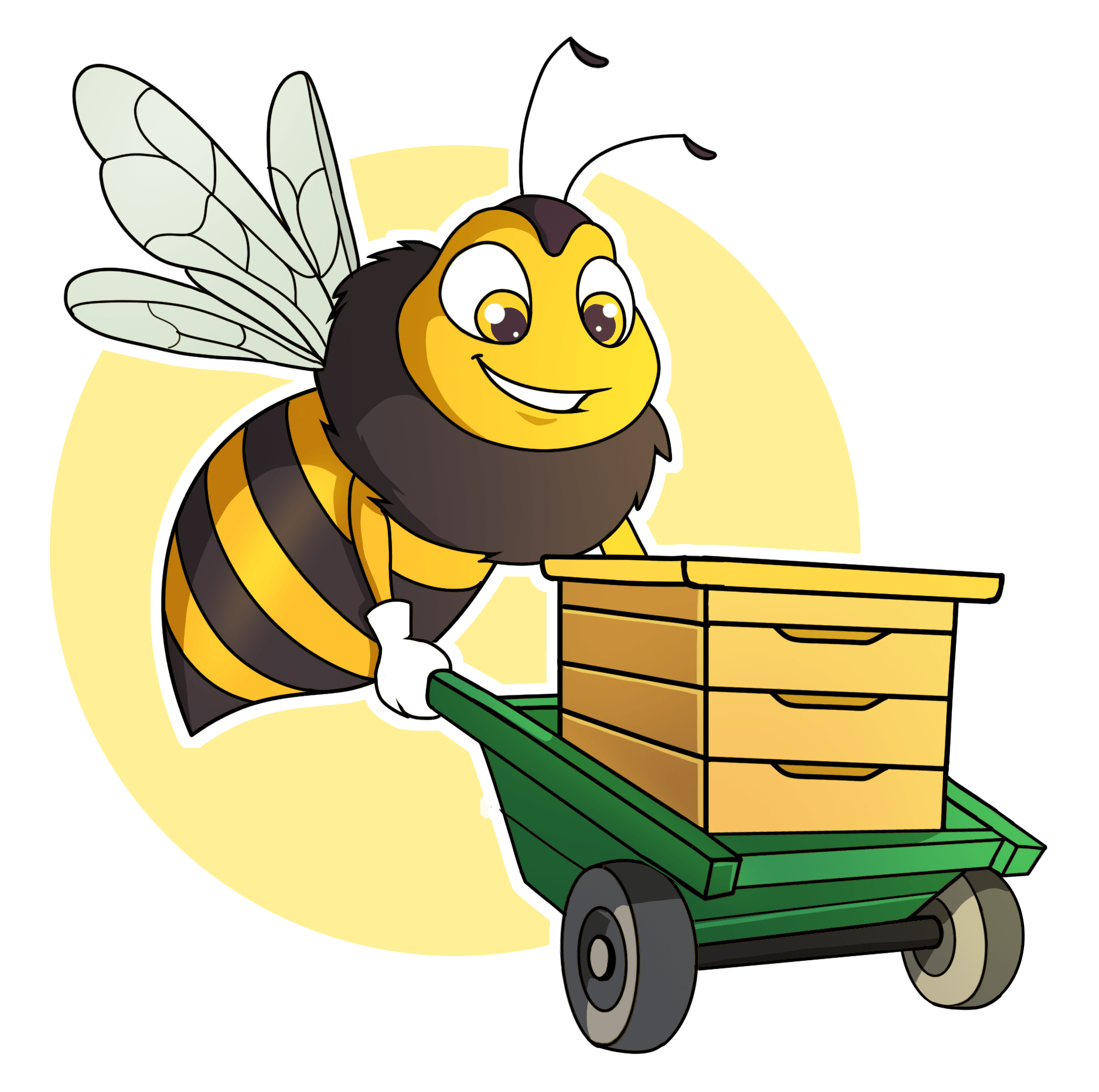
Beemoval
Specialists in the humane removal of bees from places of inconvenience throughout Devon, Cornwall and the South West.
Humane Bee Removal Specialists
Beekeepers at Heart
We are a standalone bee removal company with the welfare of the bee as our core principle. Combining 15 years of beekeeping experience, over 30 years of construction expertise, and first-class project management, our team offers a unique in-house service from survey to completion.
Our operatives are members of the BBKA (British Bee Keepers Association), we are also members of the UK Bee Removers (UKBR) subscribed to their top tier accredited scheme.
We understand that having a colony of feral bees on your property can be unpleasant for you and your neighbours. We endeavour to make their removal and relocation as stress free as possible, both for the bees and our clients.
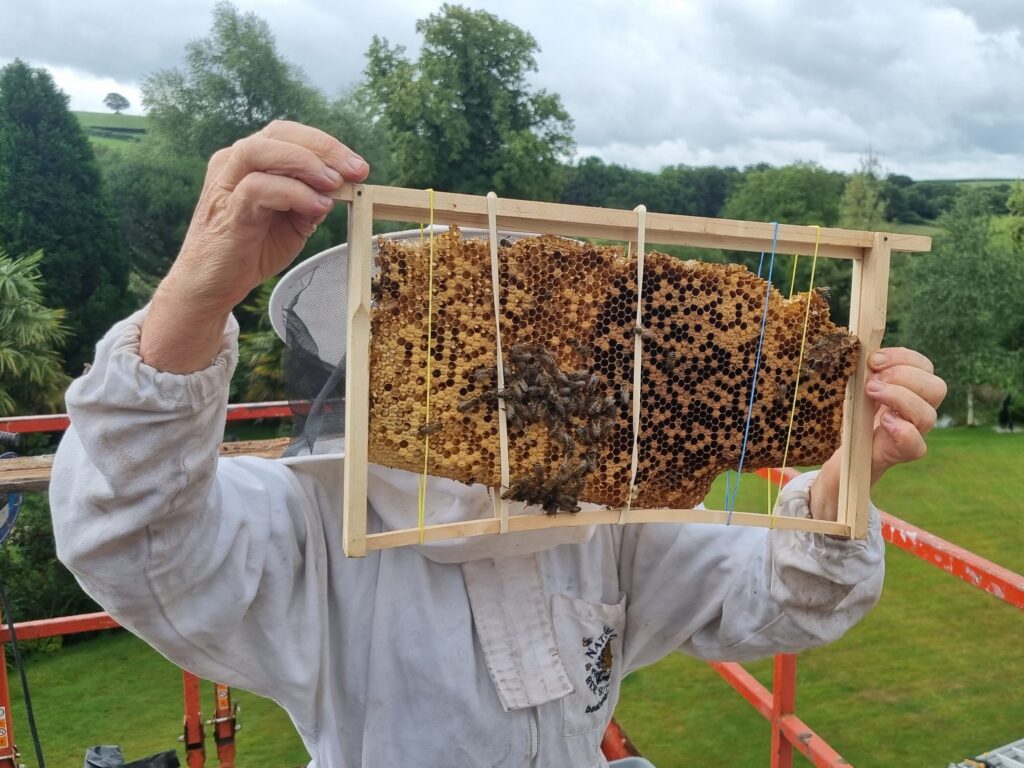
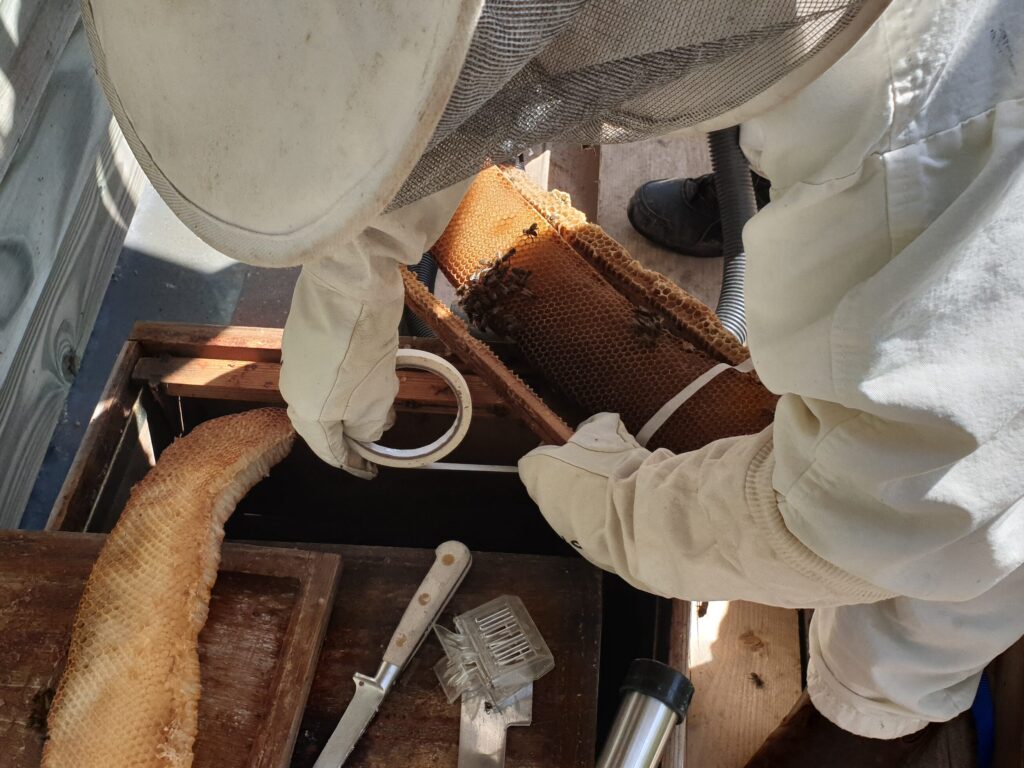
Informative, Respectful & Efficient
From initial contact we will offer a reassuring and informative service. Our survey will allow us to tell you the location of the colony and our plans for the removal.
When the time comes for the removal, our team will extract the colony as quickly and efficiently as the conditions allow. Once removed, we will repair entry points and aim to return your property to you in the condition we found it.
Post removal, the bees will be transferred to one of our quarantine apiaries. There, they will receive all the care and attention they need to nurture them back to a viable colony.
How We Remove Bees
Bee removal is the process of extracting a live colony of bees from buildings or places of inconvenience.
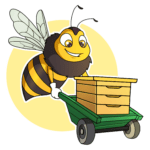
During a removal, the fabric of the building is cut away to expose the colony so the comb and bees can be safely removed before the area is cleaned and, where possible, proofed against future occupation. Removing a live colony of bees can be quite intimidating for you and your neighbours so we endeavour to perform the task as quickly as is safe for the bees.
Most bee removals take 2 days. These may not be 2 full days, however. Due to the need to extract the stragglers and the time to rebuild, it is not viable to complete the process in 1 day. On the rare occasion where we cannot compete the works in 2 days we will inform you at the quotation stage.

Read more about what’s involved below …
1. The Bee Removal Survey
For us to successfully remove the colony we need to know their precise location so we can decide on the best method for extraction. Often the Bees will be in an elevated position requiring scaffold and we need to determine what heights the lifts will need to be set at.
A survey allows us to assess the size of the colony and give you an idea of what we will need to do to extract it as quickly and safely as possible.
The principal process of the removal is exposing the colony by removing parts of your building, be it bricks, slates or plasterboard. As with any building project, the contractor needs an idea of what will be involved before the project commences. The survey allows us to discuss in advance how the removal will take place.
2. The Day of the Removal
We will arrive in the morning and set up our equipment. All we require from you is somewhere to plug an extension lead in and a source of fresh water.
Before we commence we will have a final check of the site to agree on our extraction method and note any would be issues.
Where possible, our Beekeeper will knock on your neighbours’ doors to inform them of what is happening and allay any concerns they may have. It would be advisable to inform your neighbours a couple of days in advance if possible.
3. Removing the Bees
Once we are set up, we will open the area to expose the colony then we will cut out the brood comb and wire it into fresh frames. This gives the bees a helping hand to re-establish their colony in their new hive.
Using a bee friendly vortex hoover we will suck up any bees not on the comb; these will be reunited with the rest of the colony at the quarantine apiary.
We will cover the exposed area with temporary protection and clear away any tools no longer required.
On day 2 we will return with the vortex hoover and collect any stragglers who were hiding or out foraging. Once the area is free of bees, we will clear any remaining comb and wax and, where possible, proof the area.


